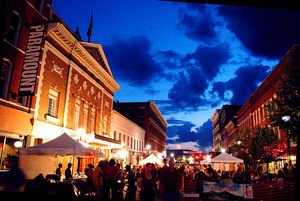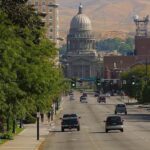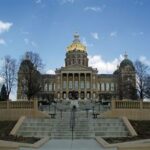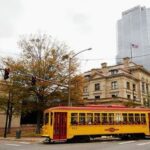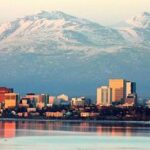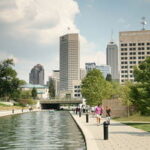This article is the forty-fifth in a 50 state series: it lists the largest cities in Vermont by population size and provides demographic details for each city–total population, population by age group, racial composition of the population, land area, and population density.
This article was updated to include the latest 1-year and 3-year population estimates from the United States Census Bureau where available.
After reading “Largest Cities in Vermont,” return to these links to access similar articles for the other 49 states: Alabama, Alaska, Arizona, Arkansas, California, Colorado, Connecticut, Delaware, Florida, Georgia, Hawaii, Idaho, Illinois, Indiana, Iowa, Kansas, Kentucky, Louisiana, Maine, Maryland, Massachusetts, Michigan, Minnesota, Mississippi, Montana, Nebraska, Nevada, New Hampshire, New Jersey, New Mexico, New York, North Carolina, North Dakota, Ohio, Oklahoma, Oregon, Pennsylvania, Rhode Island, South Carolina, South Dakota, Tennessee, Texas, Utah, Virginia, Washington, West Virginia, Wisconsin, and Wyoming.
1. Largest Cities in Vermont: Burlington, VT
Located in northwestern Vermont, Burlington is the largest city in the state with an estimated population of 38,604.
A comparatively large part of the population is college-aged: the city is home to the University of Vermont. Grouped by age, 16.3% of the population is under 18, 26.5% is 18 to 24, 26.8% is 25 to 44, 19.2% is 45 to 64, and 11.2% is 65 or older. The median age of the population is 29.6.
The racial composition of the city is 90.7% White, 3.2% Black or African American, 0.4% Native American, 2.5% Asian, 0.9% from other races, and 2.2% from two or more races. The population is 2.2% Hispanic or Latino of any race.
The land area of the city is 10.56 square miles. The city’s population density is 3,655.68 people per square mile.
2. Largest Cities in Vermont: Essex, VT
Situated in northwestern Vermont, Essex is the second largest city in the state with an estimated population of 18,626.
Classified by age, 27.9% of the population is under 18, 6.9% is 18 to 24, 32.4% is 25 to 44, 24.6% is 45 to 64, and 8.2% is 65 or older. The median age of the population is 36.5.
The racial complexion of the city is 95.4% White, 0.9% Black or African American, 0.2% Native American, 2.2% Asian, 0.2% from other races, and 1.1% from two or more races. The population is 0.8% Hispanic or Latino of any race.
The land area of the city is 39.01 square miles. The city’s population density is 477.47 people per square mile.
3. Largest Cities in Vermont: Rutland, VT
Located in the southwestern part of central Vermont, Rutland is the third largest city in the state with an estimated population of 17,292.
Categorized by age, 22.7% of the population is under 18, 7.9% is 18 to 24, 28.8% is 25 to 44, 22.4% is 45 to 64, and 18.2% is 65 or older. The median age of the population is 39.3.
The racial profile of the city is 97.8% White, 0.4% Black or African American, 0.2% Native American, 0.4% Asian, 0.1% Pacific Islander, 0.1% from other races, and 0.9% from two or more races. The population is 0.9% Hispanic or Latino of any race.
The land area of the city is 7.64 square miles. The city’s population density is 2,263.35 people per square mile.
4. Largest Cities in Vermont: Colchester, VT
Situated in northwestern Vermont, Colchester is the fourth largest city in the state with an estimated population of 16,986.
Sorted by age, 22.6% of the population is under 18, 16.3% is 18 to 24, 32.1% is 25 to 44, 22.6% is 45 to 64, and 6.4% is 65 or older. The median age of the population is 32.6.
The racial makeup of the city is 96.5% White, 0.6% Black or African American, 0.2% Native American, 1.6% Asian, 0.3% from other races, and 0.8% from two or more races. The population is 1.1% Hispanic or Latino of any race.
The land area of the city is 36.88 square miles. The city’s population density is 460.57 people per square mile.
5. Largest Cities in Vermont: South Burlington, VT
Located in northwestern Vermont, South Burlington is the fifth largest city in the state with an estimated population of 15,814.
Arranged by age, 21.6% of the population is under 18, 12.5% is 18 to 24, 30.8% is 25 to 44, 22.0% is 45 to 64, and 13.1% is 65 or older. The median age of the population is 36.2.
The racial mix of the city is 93.8% White, 0.8% Black or African American, 0.2% Native American, 3.4% Asian, 0.4% from other races, and 1.4% from two or more races. The population is 1.2% Hispanic or Latino of any race.
The land area of the city is 16.64 square miles. The city’s population density is 950.36 people per square mile.
Source(s):
“2009 ACS 1-year Estimates,” U.S. Census Bureau
“2007-2009 ACS 3-year Estimates,” U.S. Census Bureau
“2006-2008 ACS 3-year Estimates,” U.S. Census Bureau
“Population, Housing Units, Area, and Density: 2000,” U.S. Census Bureau
“Profile of General Demographic Characteristics: 2000,” U.S. Census Bureau
